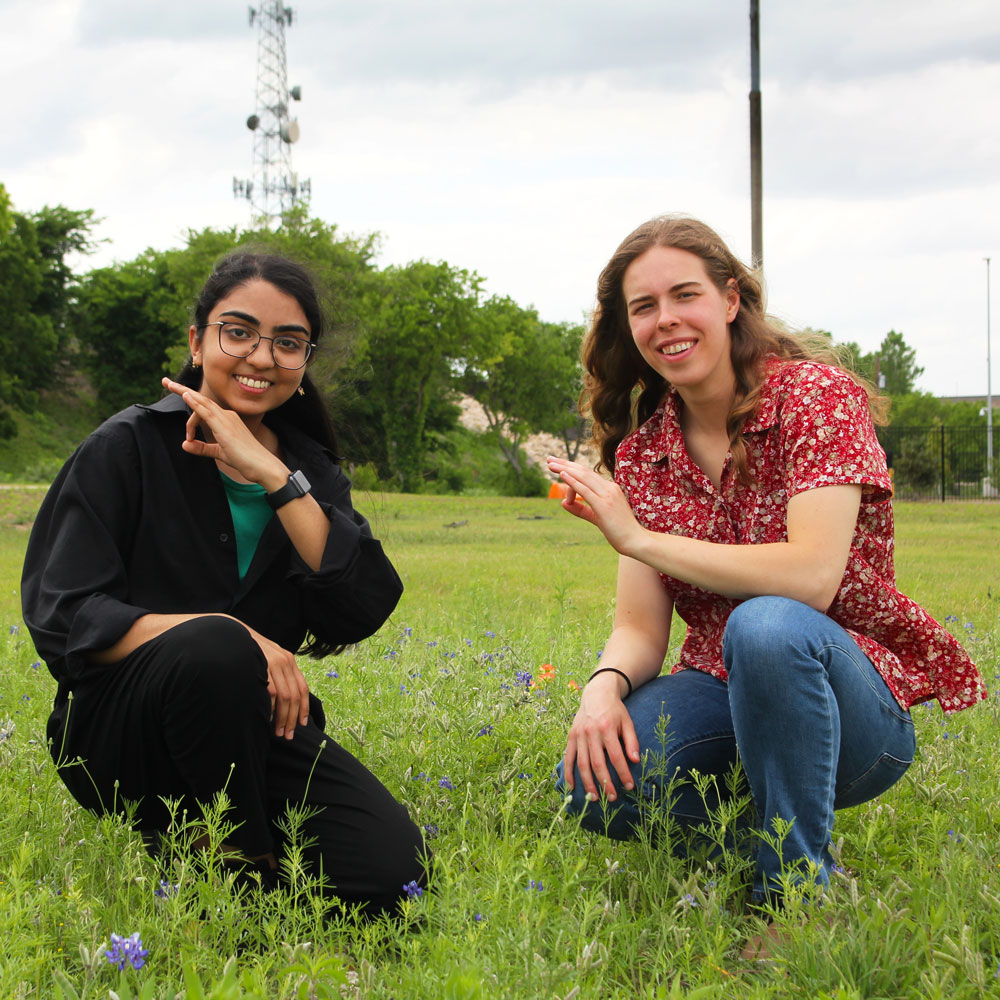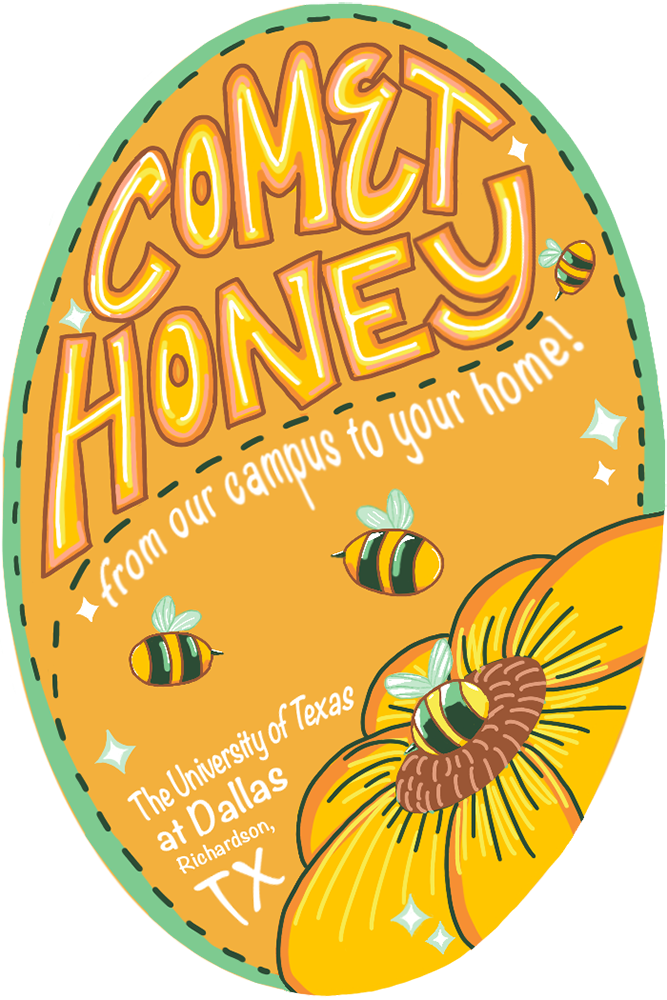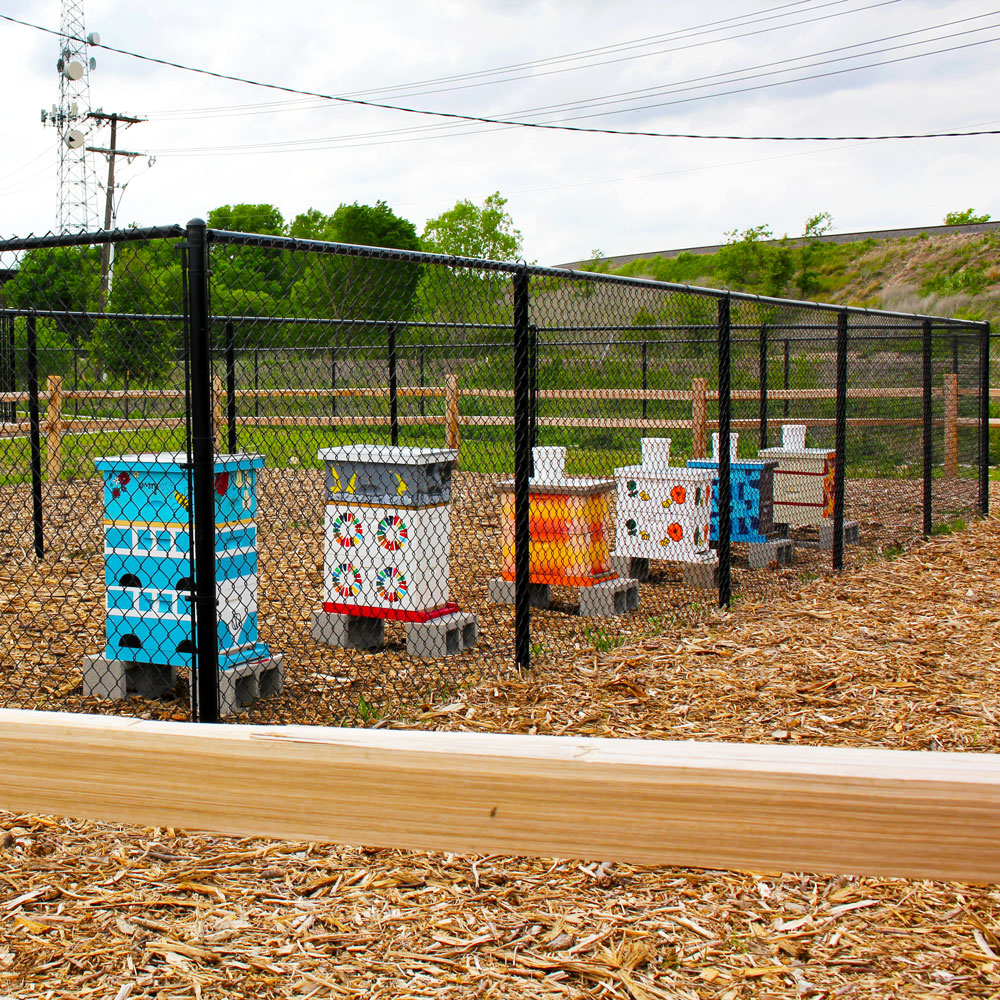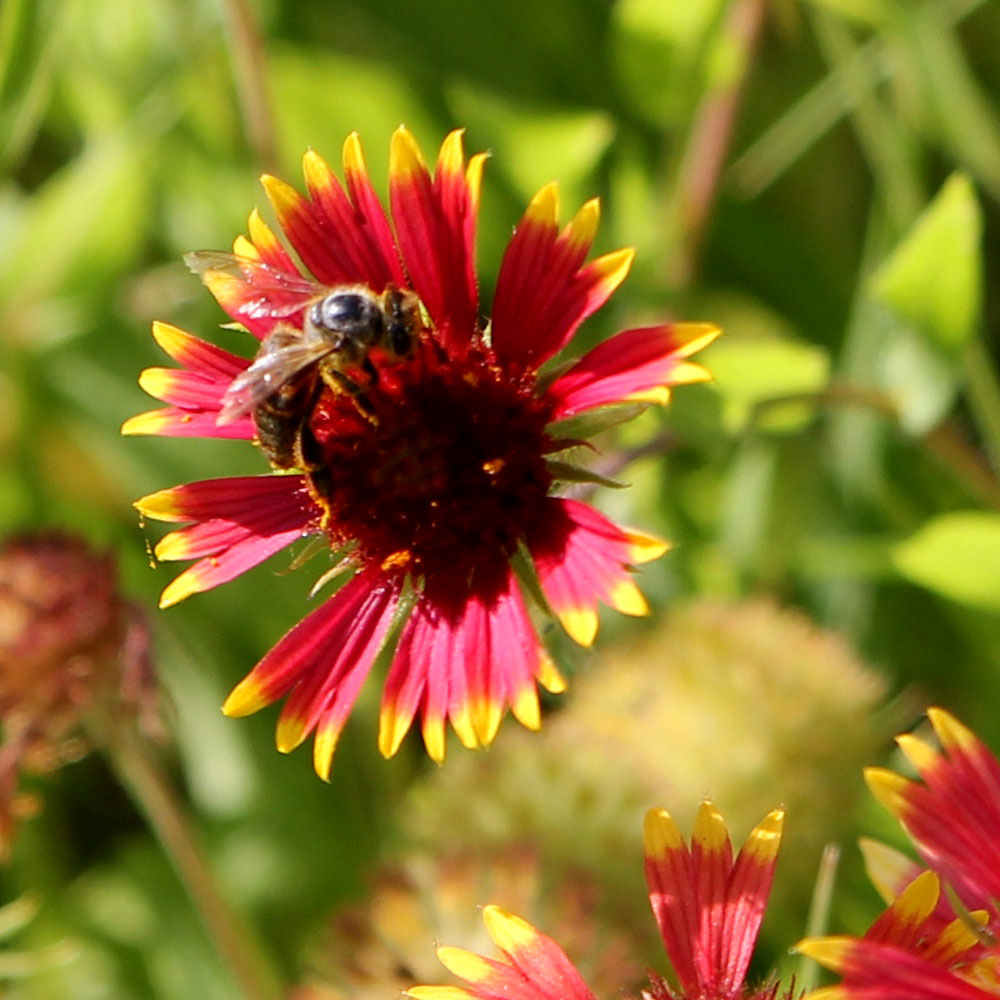From left: Samar Ahmed, Freshman in Biology and creator of the winning design; Eve Gersh, Bee Campus USA Eco Rep.
The next time that Comet Honey becomes available, this local treat will be packaged using a fun, quirky design created by a UT Dallas student. Featuring wavy lines of text, a cartoon flower, abstract bees, sparkling stars and mellow golden hues, labels for the jars of honey made by the University’s bee population will be hard to miss on any shelf. This new design by Samar Ahmed, a Freshman in Biology, came about as the result of a competition held by the Office of Sustainability.
Their supply of labels was running low, but instead of ordering more of the same, our Bee Campus USA Eco Rep, Eve Gersh, decided to highlight yet another way in which students from every major can contribute their talents to sustainability efforts. She started what Gersh hopes will be an annual art contest, so that each year’s honey harvest might have its own distinctive label. Of course, students are always welcome to get even more “hands on” with the UTD bees.
Throughout the year, students of all majors are invited to learn about the importance of local pollinators by harvesting honey themselves. After providing instruction on safety procedures, Gersh brings smoke to the hives, which triggers an instinctual response from the bees that makes them safer to be around. Students are then able to pull out frames of honeycomb and brood to observe the intricacies and behaviors of each hive as they collect honey. These events educate students about the lives of bees, the importance of pollinating insects, and the delicate work that goes into creating every drop of real Texas honey.
The Apiary at the UTD Eco Hub
The University of Texas at Dallas keeps bees in two locations on campus. Our original apiary consists of a dozen hives situated between Loop Road and the banks of Cottonwood Creek, near the Safety & Grounds building. Our newest six-hive apiary was put together at the UTD Eco Hub, to the northeast of Northside at UT Dallas. These new hives were built and painted by students in colorful designs that help the bees find their way back home to the correct hive. Each hive holds about 50,000 individual bees serving the queen and the hive as a whole through various tasks such as foraging, cooling the hive, and feeding honey to larvae. These University apiaries dovetail with other sustainability initiatives, such as the restoration of plant life native to the Texas Blackland Prairie.
A Western Honey Bee, Apis mellifera, landing atop a Firewheel, Gaillardia pulchella, on land dedicated to the restoration of native Texas Blackland Prairie.
Comet Honey is available at select pop-up events, and tastes nothing like the product which is typically sold at most local grocery stores. Gersh says that many of the items on U.S. shelves which get labeled as “honey” are actually laden with fillers. She remembers her surprise upon first trying Comet Honey that she was able to detect the flowers from which it was created. As the seasons change, the available sources change and so does the taste of Comet Honey. Autumn honey tends to be dark and robust because it is sourced from native grasses in bloom, whereas spring honey is light and rich with floral notes. Comet Honey is minimally processed and considered to be a raw honey.
As with many Sustainability initiatives — maintaining the University apiaries, harvesting Comet Honey, and now designing labels for this sweet treat — students lead the effort to both inform fellow Comets and to inspire them long after their time at UT Dallas.
Comet Honey is available for purchase at pop-up events throughout
the year. All proceeds from the sale of this honey go directly back into
student-led projects. Sign up for the Sustainability Newsletter to get notified
about the next pop-up event.
The Office of Sustainability’s mission is to engage the UT Dallas community as a catalyst
and champion for environmental stewardship and social responsibility while fostering
a culture of sustainability evident in all aspects of the campus experience.
< More News




